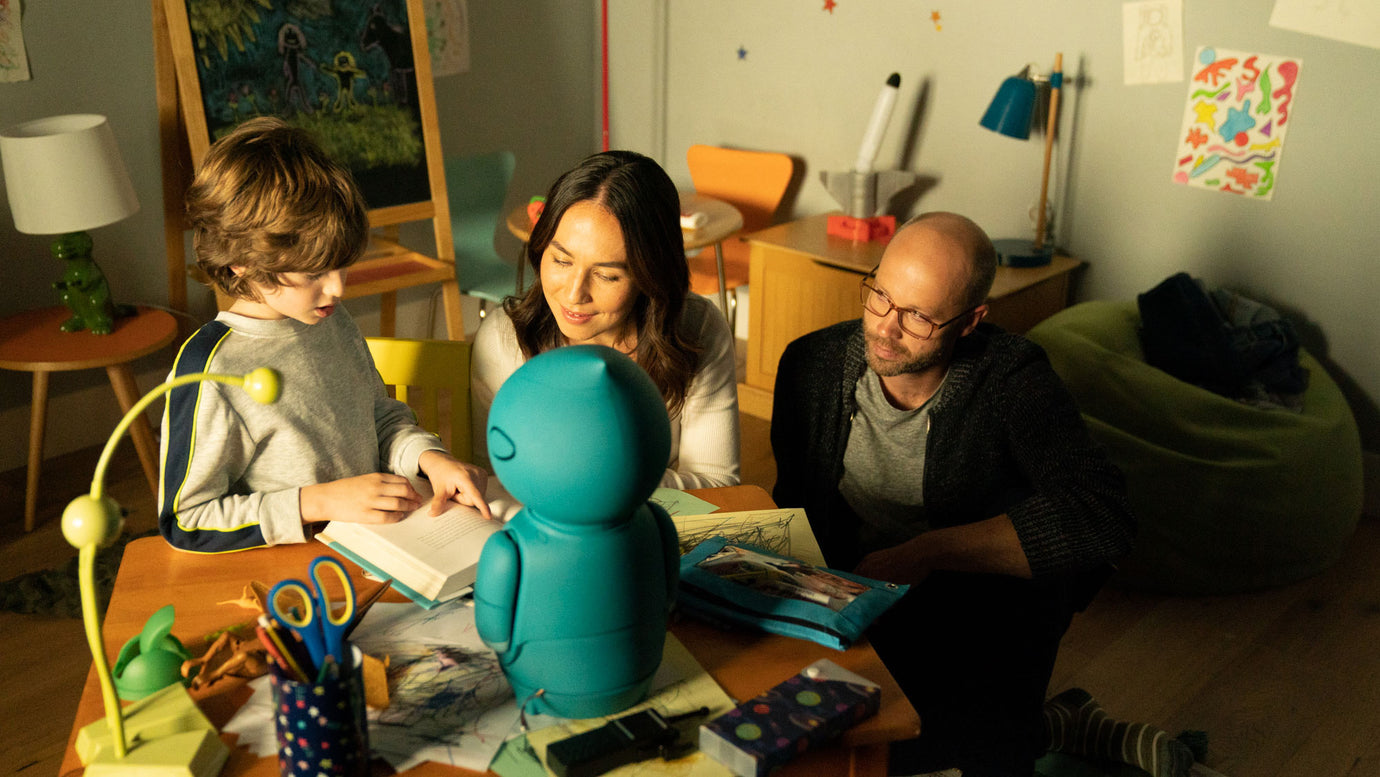Bringing Moxie to Market at the Lowest Price Possible

Bringing Moxie to Market at the Lowest Price Possible
When we started Embodied, we set a mission to revolutionize child development by creating a lifelike animate companion that promotes social, emotional, and cognitive skills through natural conversation and play-based learning. From the beginning, we knew this vision was a moonshot that would be extremely hard to accomplish. However, we did not let this challenge prevent us from pursuing our mission because we knew it was for a worthy cause!
To bring Moxie’s state-of-the-art technology to as many families as possible, we knew the price point needed to be much more affordable than robots of the past AND present. Existing social robots are priced as high as $17,000 (the price of a car!) which is just not realistic for most families. Sony’s Aibo, an amazing and highly advanced companion robot, is nearly $3,000. Even at this lower end, our team knew that most families could not afford a robot at these prices. We had to get the price of Moxie close to the price of a smartphone to be able to really make an impact.
Value of Moxie
Moxie is now offered at $1,499 with a lifetime subscription service included. The subscription service covers the service of unlimited cloud computing resources (used to process Moxie's speech recognition) and provides access to our full ecosystem including:
- Regular content updates (different themes each week)
- Insights in the companion Embodied Moxie Parent App
- Full access to our portal for kids (globalroboticslab.com) with additional activities and games
To break this total cost down, if your child uses Moxie every day for a year, this amounts to:
$124.92 per month ($1,499 / 12 months)
$4.11 per day ($1,499 / 365 days)
And if your child uses Moxie every day for two years, this amounts to:
$62.96 per month ($1,499 / 24 months)
$2.05 per day ($1,499 / 730 days)
For only $4 per day, your child can have a tool that helps promote their social and emotional development. These are important foundational skills for all children to learn. Recent studies1 have shown that the so-called soft skills or EQ skills (emotional intelligence skills) are as important if not more important than IQ and STEM skills for living a happy, well-balanced life both personally and professionally. However, there is less emphasis on soft skills or EQ skills in today’s education system. Moxie helps fill in the gaps by serving as a co-pilot to parents who want to provide social-emotional learning in a revolutionary and interactive way.
This breakdown of cost shows that Moxie is equivalent, if not less than, extracurricular activities or lessons many parents might provide for their child. A private tutor averages $35-$40 an hour and at a weekly one hour visit, that can run more than the monthly cost of Moxie. Additionally, Moxie is meant to be a daily engagement, without any specific time limits unless designated by parents (via the Parent App).
Challenges in Creating Moxie
Creating the technology behind Moxie was indeed challenging, but adding the constraint of developing it to get close to the price point of a smartphone made it 100 times more complex. That said, we had a mission that we weren’t going to stray from!
We had to rethink and reinvent how interaction with a robot was done beyond simple verbal commands to a more fluid social interaction including natural conversation, body language, emotive voice, and facial expressions. We also needed to develop a lifelike character to support this social engagement and an interface that would allow a child to interact with Moxie without adult supervision.
A Character Brought to Life
Research studies have shown that physically embodied agents (like robots) trigger the mirror neurons in a user’s brain to create a deeper level of engagement that screens alone cannot accomplish.2,3 So from the beginning, we knew that we needed to build a lifelike, embodied and expressive, believable character without adding thousands of dollars in cost.
After an endless number of iterations, we settled on a seven-motor design for the body language and a beautifully curved display for Moxie’s face and facial expressions. While it may not be apparent, the curved face was complex to build. We did not take the easier route of using a flat screen face like most other robots because we felt strongly that having a naturally curved face was an important part of bringing Moxie to life!

Moxie - CAD Drawing

Moxie - Technical Drawing
Fluid Social Interactions
To support the fluid interactions of Moxie, we had to reinvent the way a robot could carry conversations, make eye contact, express emotions, take turns, and understand when a child reads to it. We knew we would have to push the frontier of the state-of-the-art into the bleeding edge of technology. And for privacy reasons, the robot would need to be able to run its machine learning frameworks, real-time computer vision system, conversational AI, and full 3D video engine all on its own without ever sending any sensitive data to the cloud for processing. So how could we do the intense processing required and still keep the cost of the product down?
In short, it came down to ingenuity and a lot of hard work. We started by finding the most capable processor that would fit our budget for computing and built the system around that. Then, our software team worked tirelessly to push our new hardware design to its limits, enabling Moxie to run the latest in machine learning algorithms without ever needing the cloud.
Peter Teel, our Lead Engineer, discusses more about this process:
Curriculum on Social and Emotional Learning
We knew content would also be an important aspect of Moxie and so we developed a curriculum for Moxie based on play-based learning to make interacting with Moxie fun and engaging for the child. Each week, content focuses on a different theme such as kindness, respect, empathy, and other social and emotional concepts. Activities include open conversations about how the child’s day is going, reading books to Moxie, listening to stories, riddles and fun facts, providing definition of words from an age-appropriate dictionary, and practicing exercises in mindfulness, meditation, co-creation, and much more. Each day is filled with unique activities and you can read more about our curriculum in our blog post about social-emotional learning for life.
The First Affordable Robot for Social-Emotional Development
Our team has been working hard to create a platform that brings the latest in AI at a much more affordable price. We've worked through the complexities of bringing design, technology and content all together and have diligently tackled the challenges of keeping our costs low while still delivering a high-quality product and experience. By breaking down the daily cost, you can see the compelling value that Moxie provides for all of the technology, services, and content that is included. Our goal has always been to try and make the biggest impact possible in the positive social and emotional development of children. So after many years of working hard to bring Moxie to life, we’re excited to finally bring a new revolution in child development to market this year!
_______________
Sources
Sources referenced:
- Firestone, Lisa (2016). Why We Need to Teach Kids Emotional Intelligence, Psychology Today, March 16, Available at: https://www.psychologytoday.com/us/blog/compassion-matters/201603/why-we-need-teach-kids-emotional-intelligence, (Accessed: 3-June-2020).
- Wicker, B., Keysers, C., Plailly, J., Royet, J. P., Gallese, V., & Rizzolatti, G. (2003). Both of us disgusted in My insula: the common neural basis of seeing and feeling disgust.Neuron, 40(3), 655-664
- Henschel, A., Hortensius, R., & Cross, E. S. (2020). Social Cognition in the Age of Human–Robot Interaction. Trends in Neurosciences.






